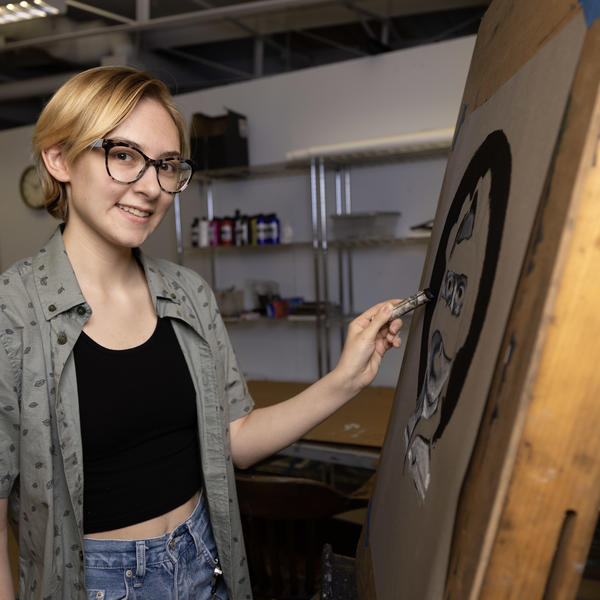Alex Raper ’25 dove straight into her Weiss Summer Research with a complex self-portrait. The sketch, which included a serpent wrapped around the top of her head, was one she described as mentally heavy and frustrating. Within a week, she felt burnt out from the weight of the artwork, so she set it aside.
But Raper didn’t quit — she reset.
In that moment, the visual arts and psychology double major needed something she could rely on to maintain her artistic motivation. She picked up her charcoals and returned to what she knew, using them to create a still life piece featuring a teapot.
It worked.
“You can switch from an idea, put something to the side, pursue something else, but you can’t completely quit,” Raper said. “It’s the worst thing you can do. You’ll never make another piece of art again and it can put enormous pressure on restarting after a long period of time.”
Recognizing the strong temptation to stop creating when the world becomes overwhelming — and how that can be detrimental to an artist’s mental health — Raper is dedicating her summer research project, “On Your Own: Maintaining Creative Motivation Post Graduation,” to the topic. In this, she is researching ways for those, including herself, to keep motivated creating art when there is no external deadline, such as that for an exhibition submission, a class assignment or a client.



